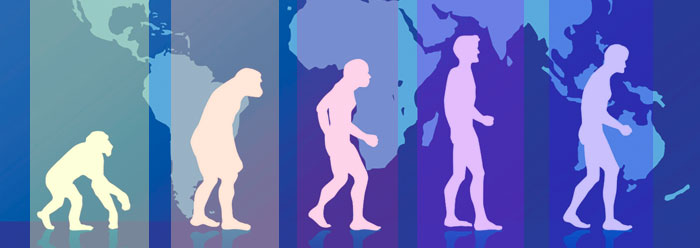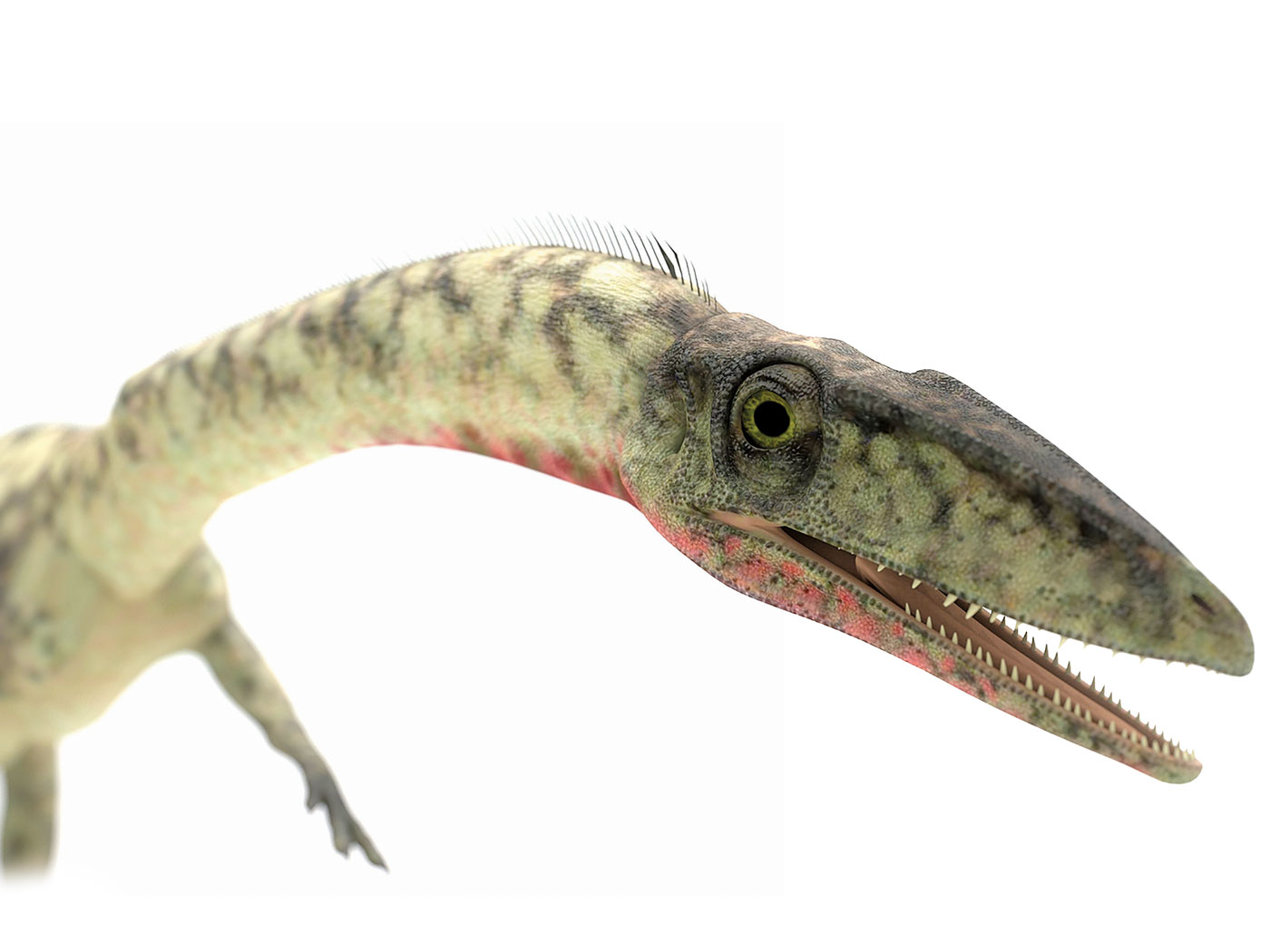In 1831 the British Admiralty recruited a naturalist to accompany Captain Robert FitzRoy of the Royal Navy on a voyage in the HMS Beagle to survey the coasts of Patagonia, Tierra del Fuego, Chile, and Peru, to visit some Pacific islands, and to establish a chain of chronometry stations around the world. John Henslow, Charles Darwin's professor of botany at Cambridge, recommended Charles, who wanted to accept but whose father, Robert, objected that it would only be another interruption to Charles' checkered education, originally directed toward the ministry. Charles' uncle Josiah Wedgwood II, a wealthy industrialist and manufacturer of Wedgwood china, persuaded Robert Darwin that his objections were unsound and they were withdrawn. Darwin sailed from Devonport (now Plymouth) in the Beagle on December 27, 1831. He was to be away five years.
Observations on the Voyage
The Cape Verde Islands provided him with his first object lesson of a volcano, on which he was able to test for himself the validity of Charles Lyell's Principles of Geology. Captain FitzRoy gave him a copy of the first volume on his arrival at the Beagle, and Henslow had advised him to read it, but on no account to believe it. Darwin was also struck by the massive amount of erosion downstream from glaciers that was evident on the Santa Cruz River in southern Argentina. He became persuaded that the amount of work done by volcanoes and glaciers could not be explained in a short period of time as the Bible demanded. These observations led to his acceptance of Lyell's doctrine of uniformitarianism (i.e., natural laws apply uniformly over long periods of time) and laid the foundations of his future work as a scientist.
In Brazil he saw his first tropical forest; in Argentina he found his first fossils--sloth, mastodons, and horses. In Tierra del Fuego he saw a tribe of men so savage, so devoid of any moral beliefs (and even occasionally cannibalistic) that they hardly seemed human. Some of them had been taken to England three years previously by Captain FitzRoy to teach them Christianity and to train them in the use of tools, and they were now being repatriated. Darwin was astonished that three years had been enough time to change them from savages into seemingly civilized people. But they soon reverted to savagery.
In Chile Darwin witnessed an earthquake and observed both its effects in raising the level of the land and its connection with volcanic eruption. Repeatedly when he was ashore he went on long, arduous, and dangerous expeditions on horseback, collecting and shooting, which showed that his addiction to sport when he was a teenager had not been wasted. On more than one occasion he saved the situation for his companions; once by running far and fast enough to save their boat from being destroyed by the wave raised by a glacier fall (they would all have been doomed had he failed), and another time by going to get help when his captain and companions were exhausted and incapable of walking a step farther.
Wherever he saw a mountain he climbed it, and on one journey from Chile to Argentina over high passes of the Andes, he was bitten massively by bugs. In the Galapagos Islands off the coast of Ecuador, he observed finchs with different beak lengths on the different islands. From the Galapagos Islands the Beagle sailed to Tahiti, New Zealand, Australia, Coco's Keeling Atoll, Mauritius, South Africa, St. Helena, Ascension Island, Brazil again (to check chronometers), and then home. Darwin landed back in England at Falmouth on October 2, 1836.
A Theory Is Born
All of Darwin's later publications stemmed directly from the observations and collections that he made during the voyage of the Beagle. As shown in the title of his book Journal of Researches into the Geology and Natural History of the Various Countries Visited by H.M.S. Beagle, 1832-36 (1839), his main interests were at first geological (although natural history took precedence over geology in the second edition of his Journal, 1845), and his observations resulted in three further books: Structure and Distribution of Coral Reefs (1842), Geological Observations on Volcanic Islands (1844), and Geological Observations on South America (1846). In the eyes of posterity, these works were so eclipsed by his bombshell on evolution that they have been neglected, but they were fundamental to his later work, On the Origin of Species (1859).
After his return from the voyage of the Beagle in 1836, Darwin was prompted to explain his observations, particularly those of birds and tortoises on the Galapagos Islands. He began to publish articles that explained their comparative anatomy, embryology, classification, geographical distribution, and paleontology as not being immutable but evolving from ancestral species. He developed the concept of natural selection as a result of selection pressure that is thought to be strongly related to the ecological niches occupied by the species. Although evolution had been advocated as far back as some Greek scientists--and by more recent philosophers and scientists such as Montesquieu, Maupertuis, Diderot, Lamarck, and Darwin's grandfather Erasmus Darwin--Charles Darwin was believed to be the first to provide adequate evidence for evolution and to explain how the process of natural selection produces adaptation. Although widely believed for many years to be the greatest organizing principle in biology, it is slowly being recognized today that adaptation may explain variation within a species, but is inadequate to provide an explanation for the origin of a species.
The Theory Is Bankrupt
Darwin himself recognized in Origin of Species that his theory had many difficulties. He listed four objections that he recognized, if not resolved, would be fatal to his theory. They were, in order:
- The lack of transitional forms
- The incredible complexity of such organs as the eye
- The development of instincts in animals
- The sterility in crossbreeding of species
In fact, these same objections have yet to be satisfactorily addressed today. And many other problems with the theory have also arisen. In fact, the idea that the information needed to develop new species comes from random, chance processes is so foreign to standard logic that only a strong desire to deny the evidence of design in nature and revelation from Scripture can force the acceptance of such convoluted logic.
Recent numerical simulations of mutation and selection under classical conditions using a new program called Mendel's Accountant have shown that evolutionary genetic theory has no theoretical support--it is an indefensible scientific model.1 Rigorous analysis of evolutionary genetic theory consistently indicates that the entire enterprise is actually bankrupt. Under no conditions do new species develop or demonstrate an increase in fitness or complexity.
While numerical simulations do not support evolutionary theory, a surprisingly wide range of very reasonable biological input parameters give rise to solutions compatible with observation and the biblical account of a recent creation. Biologically reasonable input parameters to Mendel's Accountant produce output consistent with: a) a rapid local adaptation of species; b) an initial spike in genetic variation followed by a continuous decline in diversity; c) a continuous decline in fitness; and d) the extinction of many species.
Conclusion
Charles Darwin's theory of evolution is generally believed by the scientific community and general public to be a solid scientific theory that explains the origin and development of life on earth over millions of years. Yet this theory has always been suspect to those most familiar with genetic theory, and has recently been shown to be invalid. Its premature adoption over the past century and a half has led to the wholesale rejection of our true history. It’s time now to reconsider how we've gone astray in our understanding of origins and place our confidence once more in God's Word and His revelation.
Reference
- Sanford, J. et al. 2008. Using Numerical Simulation to Test the Validity of Neo-Darwinian Theory. Proceedings of the Sixth International Conference on Creationism. Pittsburgh PA: Creation Science Fellowship and Dallas, TX: Institute for Creation Research, 165-175.
* Dr. Vardiman is Chair of the Department of Astro/Geophysics.
Cite this article: Vardiman, L. 2009. The Development and Deficits of Darwin's Theory. Acts & Facts. 38 (2): 14.





















